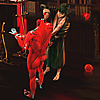Contrary to what the eye may suggest, my paintings are not manipulated photographs. Starting from a blank screen, often white or black, a rough vector drawing is first made using bezier curves. The drawing is made in sections, so that masses of the body are represented by ovals, squares and other closed shapes. The shapes can then be filled with tonal gradients to roughly approximate three-dimensional body contours and skin tones. Moving from vector to raster graphics, edges between shapes are removed, and lots of painting, applied with various "brushes" programmed by the artist, and a virtual smudging tool is used to unify the elements into a figure. Highlight and shadow are worked to achieve the desired atmospherics, and color is adjusted. Finally the (rather large) digital file is prepared for printing on canvas, watercolor paper or other archival stock using permanent pigments on a giclée printer. Digital art produced this way will last as long as paintings made using traditional techniques. The process can easily take longer than "wet" painting techniques, but the result is much more under the control of the artist.
The technique of drawing in the computer differs quite a bit from drawing on paper. As the slides below illustrate, I have to think in terms of dimensional contours, drawing a body's raised segments as discrete shapes, rather than sketching profile lines. There are close parallels with additive clay scuplture, in which the artist applies bits of clay over an armature, building up contour areas—the bumps that are our muscles, skeleton, hair, eyes, and so on. If drawings made in this way seem to benefit from a rich dimensionality and depth of field, this connection with scuplture that is partly responsible. (Not to mention thirty or forty levels of "Undo.")
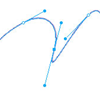 Vector drawing with bezier curves
Vector drawing with bezier curves
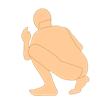 Drummer Stage 1
Drummer Stage 1
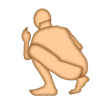 Drummer Stage 2
Drummer Stage 2
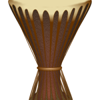 Drum drawn separately
Drum drawn separately
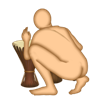 Drummer Stage 3
Drummer Stage 3
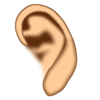 Drummer ear Stage 1
Drummer ear Stage 1
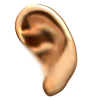 Drummer ear Stage 2
Drummer ear Stage 2
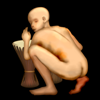 Drummer Stage 5
Drummer Stage 5
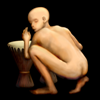 Drummer Stage 6
Drummer Stage 6
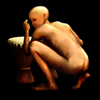 Drummer Stage 7
Drummer Stage 7
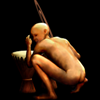 Drummer Stage 8
Drummer Stage 8
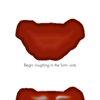 Bather Stage 1
Bather Stage 1
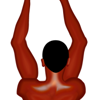 Bather Stage 2
Bather Stage 2
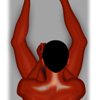 Bather Stage 3
Bather Stage 3
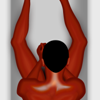 Bather Stage 4
Bather Stage 4
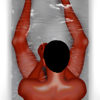 Bather Stage 5
Bather Stage 5
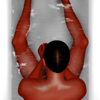 Bather Stage 6
Bather Stage 6
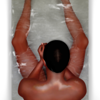 Bather Stage 7Photo Galleries Software by VisualLightBox.com v2.4
Bather Stage 7Photo Galleries Software by VisualLightBox.com v2.4
The process can be used to achieve very impressive results, equivalent in every way to oil painting. Below is an example of these techniques applied to a complex subject, involving many different textures and rich chiaroscuro.
When I speak of the original, I mean the one (and only one) original-scale giclée, signed. Signed artist proofs, which are sometimes made in the process of producing prints, are sold only if the finished quality equals that of the original, and only the highest-numbered or final proof is offered; lower-numbered proofs are obviously of lower quality and are destroyed. Prints, if they are made, are printed on archival paper or on very small canvases. All printing is done with permanent pigments on archival substrate, and each single print is approved by the artist; many are artist-pulled prints.
